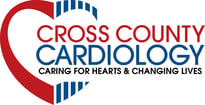Authors say fitness checks should join other, more commonly measured risk factors, given its strong prognostic value.
Cardiorespiratory fitness and age are the two most important variables for predicting all-cause mortality in patients with coronary artery disease, a new artificial intelligence (AI) study shows.
“Models need to be simple if we want to apply them in clinical practice,” lead investigator Christina de Souza e Silva, MD, PhD (CLINIMEX, Rio de Janeiro, Brazil), told TCTMD. “If we build a model that is too complicated, nobody will use it. That happens with a lot of different models we have today. We were able to create a model with aerobic fitness and age that had good accuracy to predict mortality. Adding one variable or another didn’t seem to add a lot of information.”
De Souza e Silva said that while prognostic models to identify high-risk patients are frequently used in cardiology, cardiorespiratory fitness is often not one of the considered variables. This is despite the fact that the American Heart Association considers cardiorespiratory fitness a clinical vital sign and that as far back as 2002, Jonathan Myers, PhD (Stanford University, CA), the senior author of the AI study, showed that exercise capacity was the strongest predictor of mortality even when compared with other established cardiovascular risk factors.
Machine Learning and Black Boxes
Speaking with TCTMD, de Souza e Silva said the goal of the present study was to develop a prognostic model for survival in patients with CAD using variables that went beyond traditional risk factors. To do so, researchers turned to a Canadian database of patients undergoing cardiac rehabilitation after coronary angiography. As part of rehab, all patients had a complete baseline clinical assessment, including a symptom-limited graded exercise test, mostly done on a treadmill, to determine maximal exercise capacity.
From the data set, there were 260 variables identified from 23,215 patients. These variables were eventually whittled down to 25 from more than 13,000 patients and assessed for their prognostic importance for all-cause mortality. Importantly, the researchers avoided the “black-box” approach with machine learning, which is a model created by inputted data that is beyond the understanding of humans.
“You have a number of different techniques with machine learning,” said de Souza e Silva. “With the black box, you just put everything in and then get a result. The problem is that you don’t know how the algorithm got there. There’s a lot of criticism about the black-box [approach] and how it’s being used, especially in medicine.”
For a variety of different reasons, I don’t think physicians always appreciate aerobic fitness and don’t really know how to measure it in clinical practice.Christina de Souza e Silva, MD, PhD
Next, the researchers developed a “survival tree” machine-learning model which allowed them to build a prognostic model by adding in different variables. In prognostic modeling, the greatest increase in the C-index (0.729) was seen when adding in maximal exercise capacity and age. There were increases when sex, smoking status, and presence of malignant disease and chronic heart failure were added to the model, but these increases were small.
Given the findings, as well as the previous research showing the importance of aerobic fitness for predicting future outcomes, de Souza e Silva said physicians need to take exercise capacity seriously in clinic. “Just as we measure blood pressure, blood glucose, cholesterol, or height and weight, we should also assess aerobic fitness,” she said. “But for a variety of different reasons, I don’t think physicians always appreciate aerobic fitness and don’t really know how to measure it in clinical practice.”
That shouldn’t be a barrier, though, since that validated questionnaires are available to help physicians assess aerobic fitness in the clinic, she added. “In a few minutes, you can estimate their exercise capacity.”
Claudio Gil Araújo, MD, PhD (CLINIMEX), who is a colleague of de Souza e Silva’s but who wasn’t involved in the AI study, said the new paper adds to existing research by using novel and advanced machine-learning techniques to corroborate and confirm that aerobic fitness “is a very strong marker of clinical prognosis.”
Given that cardiorespiratory fitness is such an important variable for predicting all-cause mortality in patients with coronary heart disease, modifying exercise habits in these patients should be a priority, he stressed. Other research this week looking at the impact of exercise in coronary heart disease patients emphasized the importance of getting physically active, or maintaining current exercise habits, even after an MI diagnosis.
--
The cardiovascular experts at Cross County Cardiology - Mt. Sinai can help you identity and monitor your cardiorespiratory fitness. Call us today at 201-776-8690 or go online to schedule an appointment.



